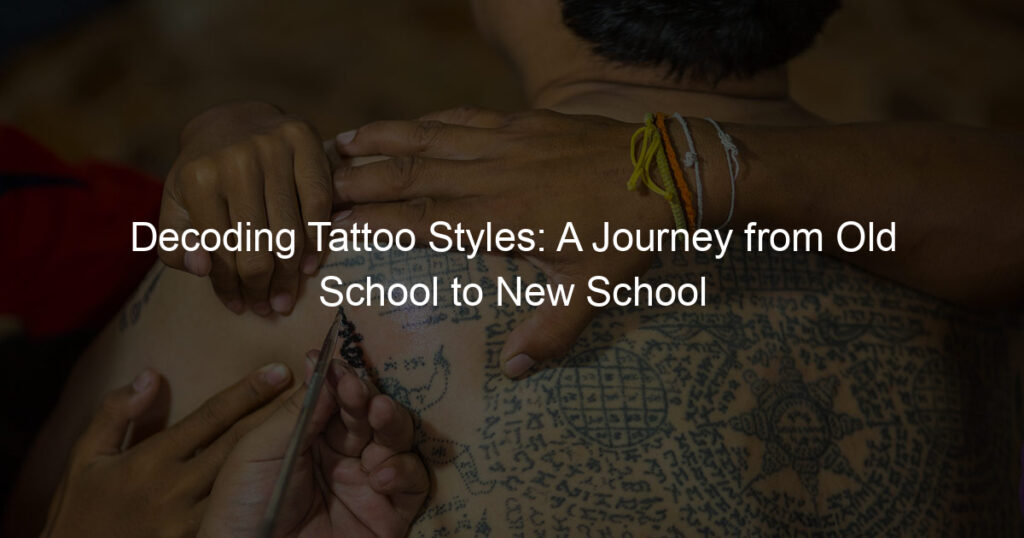Tattoos are a form of body art that has been around for centuries. They were once used as a form of protection, but now they are more commonly used for self-expression. Tattoo cultures have evolved and vary from place to place.
In this blog post, we’ll take a look at the history and evolution of tattoo cultures around the world.
What is the historical significance of tattoos in tattooslture?
Tattoos have evolved from a once taboo practice to become deeply entrenched in popular culture. Historically, tattooing has been used for centuries as a way of signifying individuals’ beliefs, identities, es and cultural affiliations.
In some cultures, tattoos are worn as symbols of tribe memberships or for religious rituals, while in other societies they might be used for decorative purposes.
Over time, tattoos have grown increasingly popular around the globe, illustrating the power of marking the human body with ink – whether its meaning is personal, shared, or unified.
While some ink may be done merely for aesthetic purposes alone, much of our choice to get inked lies in the deeper cultural significance behind the act.
What cultures started tattoos?
Tattooing has been practiced by many cultures throughout history. The practice can be traced back to ancient Egypt, with stone and metal tools used to create tattoos on human skin.
The indigenous Pacific Islands, Polynesia, and Samoa are believed to be the earliest adopters of tattoo culture before they slowly spread across Southeast Asia and Africa.
Traditionally, these tattoos had spiritual or social significance and served as a rite of passage for young adults entering adulthood. Even today there are still traditional rituals attached to receiving tattoos that often deeply connect people from different communities back to shared ancestral roots.
How tattooing has changed throughout history?
Tattooing has undergone quite an evolution throughout history. From its earliest beginnings as a painful yet spiritual ritual to the intricate art pieces of today, it’s incredible how far it has come.
While tattoos were originally used by ancient cultures to signify rank and courage, they gradually became more commonplace as time passed. In some parts of the world, like Japan and Polynesia, tattooing has been an accepted part of the culture for centuries.
Today, tattoos are more popular than ever – a way of expressing ourselves creatively, and often as a symbol of personal identity. It continues to evolve rapidly with new technologies making intricate pieces possible;
from colors that can last decades to realistic-looking textures and shading of the highest detail. It’s amazing to think about all that we’ve learned about this form of body art in such a short period!
What cultures have cultural tattoos?
Tattoos have been around since ancient civilizations and can be seen in many cultures across the world.
From traditional Māori facial tattoos to African Haida and Samoan body markings, all these cultural tattoos have a unique story behind them – one that carries deep personal meaning for those who bear them.
Even today, the preferred motifs vary from culture to culture; some tattoos represent spiritual beliefs while others are symbols of bravery or a mark of success.
In some communities across Asia, Thais and Indonesians use henna-style temporary tattoos that can last up to several weeks and often involve intricate patterns that express cultural pride or signal a life milestone.
No matter what type of tattoo you come across it’s sure to convey something about its wearer’s heritage – a testament to the power of being proudly inked!
Have cultural views of tattooing changed over time?
Over the years, there has been a definite shift in the perceptions and cultural views surrounding tattooing. Once thought of as being exclusively for criminals, outcasts, and others on the fringes of society, it’s now becoming more accepted by the mainstream.
Young adults are increasingly open to experimenting with body art, often viewing it as a form of creative expression. Entrepreneurs across various industries have also embraced tattoos, understanding that it simply doesn’t hold the same stigmas that they once did.
It’s a trend that isn’t likely to reverse either; largely thanks to social media, tattooing is slowly becoming an integral part of modern culture.
How are tattoos used in different cultures?
Tattoos have been popularized as a modern body art trend, but did you know that tattoos have also had long-running histories in many different cultures around the world?
From Maori facial markings in New Zealand to henna-covered hands and feet in India, tattoos can mean different things across various societies.
In some cultures, they can be worn as signs of devotion or even badges of maturity, while others believe they act as protection against bad fortune.
No matter their purpose, it’s impossible to deny that tattoos have become part of a global phenomenon — adding meaning to people’s lives through permanent works of art.
Concluding thoughts
Tattoos have been around for thousands of years and can be found in cultures all over the world. Today, tattoos are more popular than ever before.
They are a way to express oneself, to show one’s individuality. Whether you have a small or large tattoo, they all hold meaning and significance. Thanks for reading!














